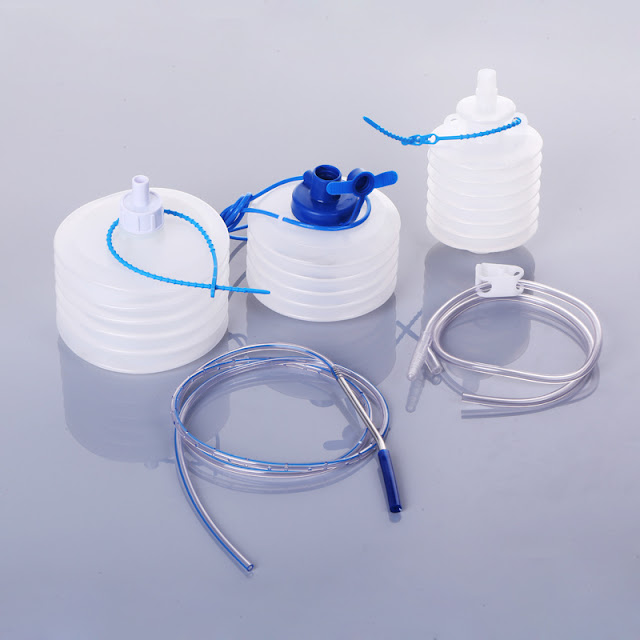 |
| Surgical Drainage Devices |
A Surgical Drainage
Devices is an implant that allows the removal of fluid or air from a wound or
body cavity. This includes urinary catheters, nasogastric tubes, ventriculoperitoneal
shunts, and vascular access ports. Surgical Drains are an important part of
wound care, as they are placed to reduce the likelihood of infection and delay
wound healing. They can be superficial to the skin or deep in an organ, duct,
or cavity. The rising number of surgeries across the globe has fueled the
demand for these devices.
Surgical Drainage Devices are also used to remove exudates
from the peritoneal and pleural spaces. In order to achieve the highest level of
patient safety and quality, a drain should be properly managed after placement
and during operation. The patient's care team should monitor the site for signs
of infection, obtain swabs or samples of any ooze to be collected, and take
note of any changes in color, swelling, bad odor, or pus in the area around the
drain.
General Surgery, Cardiovascular & Thoracic Surgery, Obstetrics & Gynecology, Orthopedic Surgery, and Plastic/Reconstructive Surgery are some of the major applications of Surgical Drainage Devices. If an open drain is placed in a dependent area, the skin must be properly covered by a bandage to prevent it from being pulled out. If the drain is inserted into a body cavity, a safety pin may be placed at the end to prevent it from being pulled out.
There are a few different types of surgical drains for Surgical Drainage Devices, each with
its own benefits and drawbacks. One common type is the Jackson-Pratt drain or
JP drain. It is a low-pressure drain that collects blood immediately after
surgery and then turns to fluid with occasional blood clots. This drain is used
to remove the blood from a wound during and after surgery, which can help the
wound heal faster and prevent infection. It is also a valuable tool to keep
track of how much fluid has been drained. In August 2021, SOMVAC Medical
Solutions, Inc. received the U.S. Patent (11,078,898), which covers its SOMVAC
SVS Smart Suction Technology and its management platform for surgical drains.










0 Comments